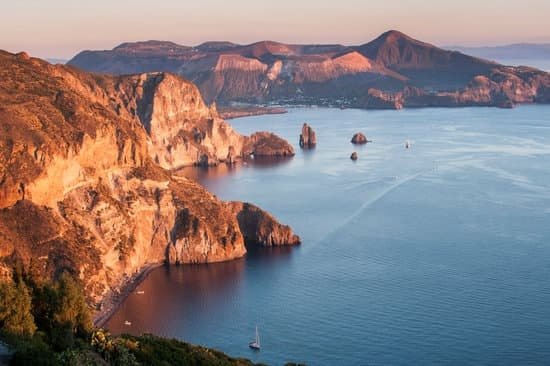Are you planning a trip to Italy and wondering when is the best time to travel? Italy’s rich history, breathtaking landscapes, and vibrant culture make it a top destination for travelers from around the world.
In this article, we will explore the different seasons and weather patterns in Italy, the pros and cons of visiting during peak tourist season versus off-peak season, and highlight the best festivals and events throughout the year. Whether you’re interested in outdoor activities, exploring coastal areas, or city sightseeing, we’ll provide expert advice on the ideal time to visit Italy based on your specific interests.
Italy is known for its diverse climate and stunning scenery – from bustling cities to serene countryside and beautiful coastlines. Understanding the weather patterns in this Mediterranean country is crucial when planning your trip. We will provide an in-depth overview of the climate in different regions of Italy, helping you determine when is the best time to experience your desired activities.
Additionally, we will delve into insider tips for travelers with specific interests such as food, wine, art, and more. Our goal is to help you make informed decisions about when to visit Italy based on your personal preferences, so that you can make the most out of your travel experience.
Whether you’re drawn to the historical marvels of Rome, the Renaissance art in Florence, or the romantic canals of Venice – we’ve got you covered with all the information you need to plan an unforgettable trip to Italy.
Weather Overview
Italy is known for its diverse climate, with regions experiencing different weather patterns throughout the year. Understanding the climate and seasons in Italy is crucial when planning a trip to this beautiful country. From the mountains in the north to the stunning coastline in the south, Italy’s weather can vary significantly depending on the region you plan to visit.
Overview of Seasons
Italy experiences four distinct seasons: spring, summer, autumn, and winter. Springtime (April to June) brings mild temperatures and blooming flowers, making it an ideal time for outdoor activities and sightseeing. Summer (July to August) is peak tourist season, with hot and sunny weather attracting visitors to the beaches and cities.
Autumn (September to November) offers pleasant temperatures and colorful foliage, making it perfect for exploring Italian landscapes. Winter (December to February) brings colder temperatures, especially in the northern regions, while the southern coast enjoys milder weather.
Regional Variations
It’s important to note that Italy’s climate varies by region. Northern Italy experiences cold winters with potential snowfall in mountainous areas such as the Alps and Dolomites. Central Italy has a Mediterranean climate with hot summers and mild winters, while southern Italy enjoys a subtropical climate with hot summers and mild winters near the coast.
When Is the Best Time to Travel to Italy?
The best time to travel to Italy depends on your preferences and interests. If you enjoy warm weather and want to experience popular tourist attractions at their busiest, summer may be the ideal time for your visit. However, if you prefer quieter surroundings and moderate temperatures for outdoor activities or sightseeing without large crowds, consider visiting during the spring or autumn months when Italy experiences milder weather and fewer tourists.
Peak Tourist Season
The peak tourist season in Italy typically falls between the months of June and August. During this time, the weather is warm and sunny, making it an ideal period for travelers to explore the beautiful cities and coastlines of Italy.
However, with the great weather comes large crowds of tourists, long lines at popular attractions, and higher prices for accommodations and activities. If you are someone who enjoys a lively atmosphere and doesn’t mind the hustle and bustle of crowded places, then visiting Italy during the peak tourist season might be perfect for you.
On the other hand, traveling to Italy during the high season also has its drawbacks. The scorching summer heat can be overwhelming for some visitors, especially those not used to hot temperatures.
Additionally, popular destinations like Rome, Florence, and Venice can become extremely crowded, making it difficult to have a peaceful and authentic experience. If you prefer a more relaxed and intimate travel experience or want to avoid long waits at popular tourist sites, then it may be best to consider visiting Italy during the off-peak season.
Despite these potential challenges, there are ways to make the most of traveling to Italy during the peak tourist season. Making advanced reservations for accommodations and tickets to attractions can help minimize waiting times and ensure that you have a comfortable stay.
Additionally, researching lesser-known or off-the-beaten-path destinations within Italy can provide a unique travel experience away from the crowds. Ultimately, whether or not it is the best time to travel to Italy will depend on your personal preferences and priorities when planning your trip.
Off-Peak Season
Italy is a destination that offers something special every month of the year. While the peak tourist season may be the most popular time to visit, exploring Italy during the quieter months can also provide a unique and enjoyable experience. Traveling to Italy during the off-peak season can offer several advantages for tourists, including smaller crowds, more affordable prices, and a chance to immerse oneself in authentic Italian culture.
One of the best times to visit Italy is during the shoulder seasons of spring (April to June) and fall (September to October). During these months, visitors can expect pleasant weather, blooming landscapes, and an abundance of local produce in full harvest. The country is often less crowded during these times, allowing travelers to explore popular attractions without feeling overwhelmed by large crowds.
Exploring Italy during the off-peak season also presents an opportunity to experience local traditions and culture on a deeper level. With fewer tourists around, it’s easier to connect with locals, partake in traditional festivals and events, and savor regional cuisine without having to compete for reservations at popular restaurants.
Additionally, traveling to Italy during the quieter months means that accommodation and airfare prices are generally lower compared to peak season rates. This can make a trip to Italy more budget-friendly without sacrificing quality or experiences. Ultimately, the off-peak season provides an ideal opportunity for those seeking a more relaxed and authentic Italian travel experience.
Festivals and Events
Italy is known for its rich cultural and historical heritage, and one of the best ways to experience this is by attending the various festivals and events that take place throughout the year. From religious celebrations to art exhibitions, there is always something happening in Italy that showcases the country’s unique traditions and customs.
Religious Festivals
One of the most significant religious events in Italy is Easter, particularly in cities like Rome and Florence. The week leading up to Easter Sunday, known as Holy Week, sees processions, reenactments, and religious services that attract both locals and tourists. Another important religious event is the Feast of Saint Mark on April 25th, which is celebrated with a traditional regatta in Venice.
Cultural Events
Italy also hosts numerous cultural events that highlight the country’s artistic and creative prowess. The Venice Biennale, held every two years from May to November, showcases contemporary art from around the world. Additionally, the opera season at Verona Arena during the summer months attracts music lovers from all over the globe.
Historical Celebrations
Throughout the year, various historical anniversaries and commemorations are observed in Italy. One such event is Festa della Repubblica on June 2nd, which marks the establishment of the Italian Republic. This national holiday features parades, concerts, and fireworks in major cities across Italy.
Whether you’re interested in religious traditions, contemporary art, or historical milestones, Italy offers a diverse range of festivals and events to suit every interest. Depending on your preferences for cultural immersion or avoiding crowds when visiting these events will dictate when is best time to travel to Italy.
Outdoor Activities
When is the best time to travel to Italy if you’re an outdoor enthusiast? Italy’s diverse landscapes offer plenty of opportunities for hiking, biking, and exploring the countryside. Understanding the best time to visit for these activities depends on the region and the type of experience you’re seeking.
Here are some factors to consider when planning your outdoor adventure in Italy:
- Weather: Italy’s climate varies from region to region. In general, the spring and fall months are ideal for outdoor activities, as they offer mild temperatures and less rainfall than summer or winter.
- Peak seasons: If you prefer to avoid crowds, consider visiting during the off-peak season. During the high summer months, popular hiking trails and bike paths can be crowded with tourists.
- Specific regions: Northern Italy is known for its picturesque mountains and alpine scenery, making it a great destination for summer hiking and spring/fall biking. Southern Italy offers a more temperate climate year-round, but summers can be hot in inland areas.
No matter when you choose to visit, keep in mind that certain regions may have specific seasonal attractions or activities that make them particularly appealing at different times of the year. Whether you’re interested in exploring Tuscany’s rolling hills or taking on the challenging trails of the Dolomites, timing your trip appropriately will ensure a memorable outdoor adventure in Italy.
Beaches and Coastal Areas
Italy is a country famous for its stunning coastal areas, making it an ideal destination for beach lovers. The best time to visit the Italian coastlines largely depends on the type of experience you are seeking. The summer months, from June to August, are popular with tourists due to the warm weather and lively atmosphere. However, this also means crowded beaches and higher prices for accommodations.
For those who prefer a more peaceful beach getaway, the shoulder seasons of spring (April and May) and autumn (September and October) are great options. During these months, the weather is still pleasant, but the crowds have lessened, allowing visitors to enjoy a more relaxed experience by the sea. Additionally, prices for hotels and activities tend to be lower during these off-peak months.
| Best Time to Visit | Considerations |
|---|---|
| Summer (June-August) | Warm weather, crowded beaches |
| Spring (April-May) or Autumn (September-October) | Pleasant weather, fewer crowds, lower prices |
City Sightseeing
When it comes to exploring the bustling cities of Rome, Florence, and Venice, timing can make a significant difference in your overall experience. Each city has its own unique charm and attractions, so choosing the best time to visit can enhance your sightseeing adventure.
Rome, known for its rich history and iconic landmarks such as the Colosseum and St. Peter’s Basilica, is best visited during the spring (April to June) and fall (September to October) months. The weather is mild, and the tourist crowds are not as overwhelming as in the peak summer season. Springtime in Rome also brings beautiful blooms and outdoor events.
Florence is famous for its art, architecture, and Renaissance history. The ideal time to visit this city is during the late spring (May and June) or early fall (September). During these months, you can enjoy pleasant weather for exploring the museums, galleries, and historic sites without the intense heat of summer or the large tourist crowds.
Venice, with its picturesque canals and historic ambiance, is best experienced in the shoulder seasons of spring (April to June) and fall (September to November). These months offer comfortable temperatures for strolling through the charming streets and admiring the unique beauty of this canal city without being overwhelmed by fellow tourists.
Insider Tips
In conclusion, Italy is a country with something to offer for every type of traveler, regardless of their specific interests or preferences. The best time to travel to Italy truly depends on what you are looking to experience during your trip.
Whether it’s indulging in the finest Italian cuisine, sipping on world-class wines, admiring renowned art and architecture, or simply soaking up the Mediterranean sun on its beautiful coastlines, there is a perfect time for every kind of traveler.
For those interested in culinary experiences, the best time to visit Italy would be during the autumn months when the harvest season is in full swing. This is when food festivals and truffle fairs abound, offering visitors the chance to sample local delicacies and traditional dishes. Wine enthusiasts may want to plan their trip around September and October, when vineyards across the country celebrate their grape harvests with wine tastings and festivals.
Art aficionados will find that visiting Italy during the off-peak months allows for a more intimate and serene experience at renowned museums and galleries. During this time, visitors can admire masterpieces without the crowds that are typical during peak tourist seasons. In addition, outdoor activities such as hiking and exploring the countryside are best enjoyed during spring or early autumn when temperatures are mild and nature is at its most vibrant.
Ultimately, there isn’t a single “best” time to visit Italy – it all comes down to individual preferences and interests. Regardless of when you choose to visit this enchanting country, Italy will undoubtedly leave a lasting impression with its rich history, stunning landscapes, delectable cuisine, and warm hospitality.
Frequently Asked Questions
What Is the Best Month to Travel to Italy?
The best month to travel to Italy is typically in the late spring or early fall. May and September offer pleasant weather, fewer crowds, and lower prices compared to the peak summer months.
What Is the Cheapest Month to Go to Italy?
The cheapest month to go to Italy is often in January or February. These winter months are considered off-peak for tourism, so you can find lower airfares and hotel rates during this time.
What Month Has the Least Tourists in Italy?
The month with the least tourists in Italy is usually November. With the summer tourist season over and winter not yet in full swing, November sees fewer crowds at popular attractions and more availability for accommodations.

I’m a passionate traveler, writer, and Italophile. My fascination with Italy’s history, art, and culture has led me on countless adventures across the Italian landscape. Through “I Live Italy,” I share my love for this extraordinary country and aims to inspire others to explore its boundless beauty.





